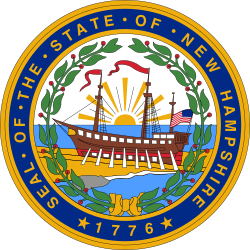Election held on March 8, 1791, to elect President of New Hampshire
| |||||||||||||||||
| |||||||||||||||||
| |||||||||||||||||
The 1791 New Hampshire gubernatorial election was held on March 8, 1791, in order to elect the President of New Hampshire. (The office would be renamed to Governor in 1792.) Incumbent Anti-Federalist President Josiah Bartlett was re-elected unopposed. [1]

